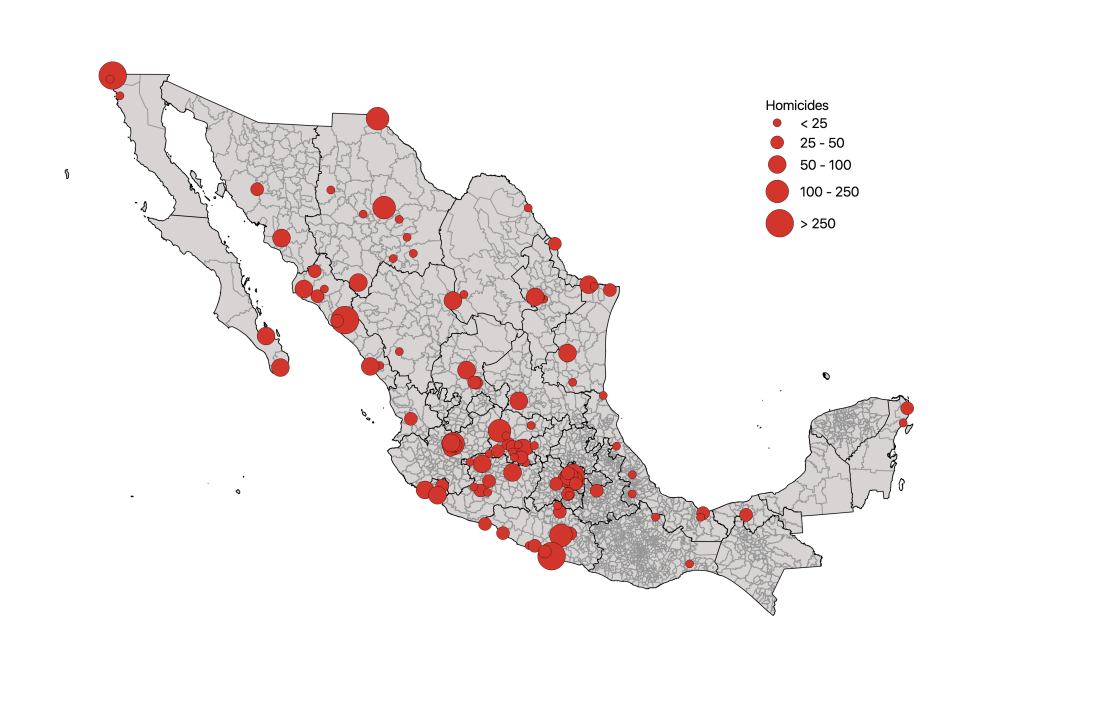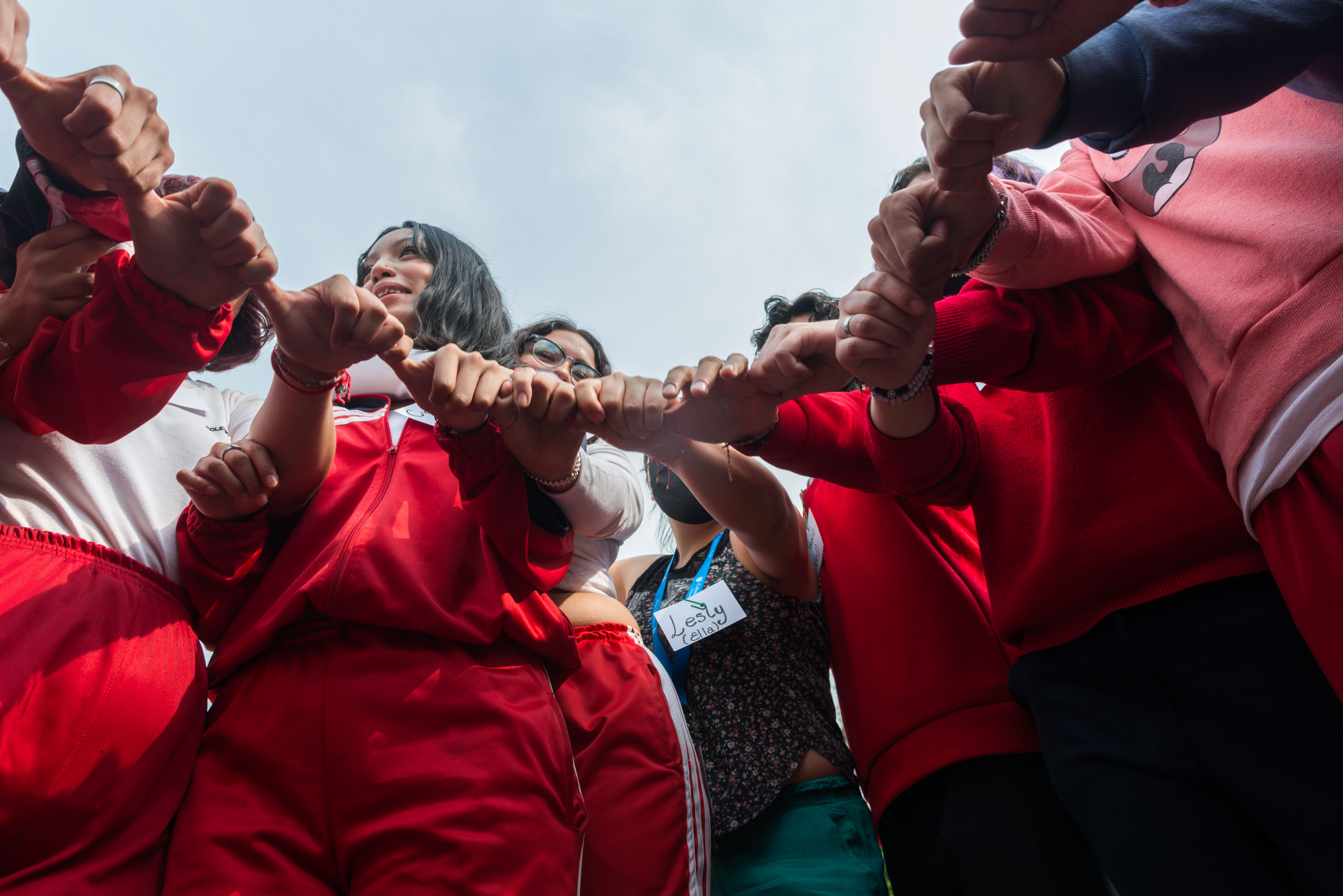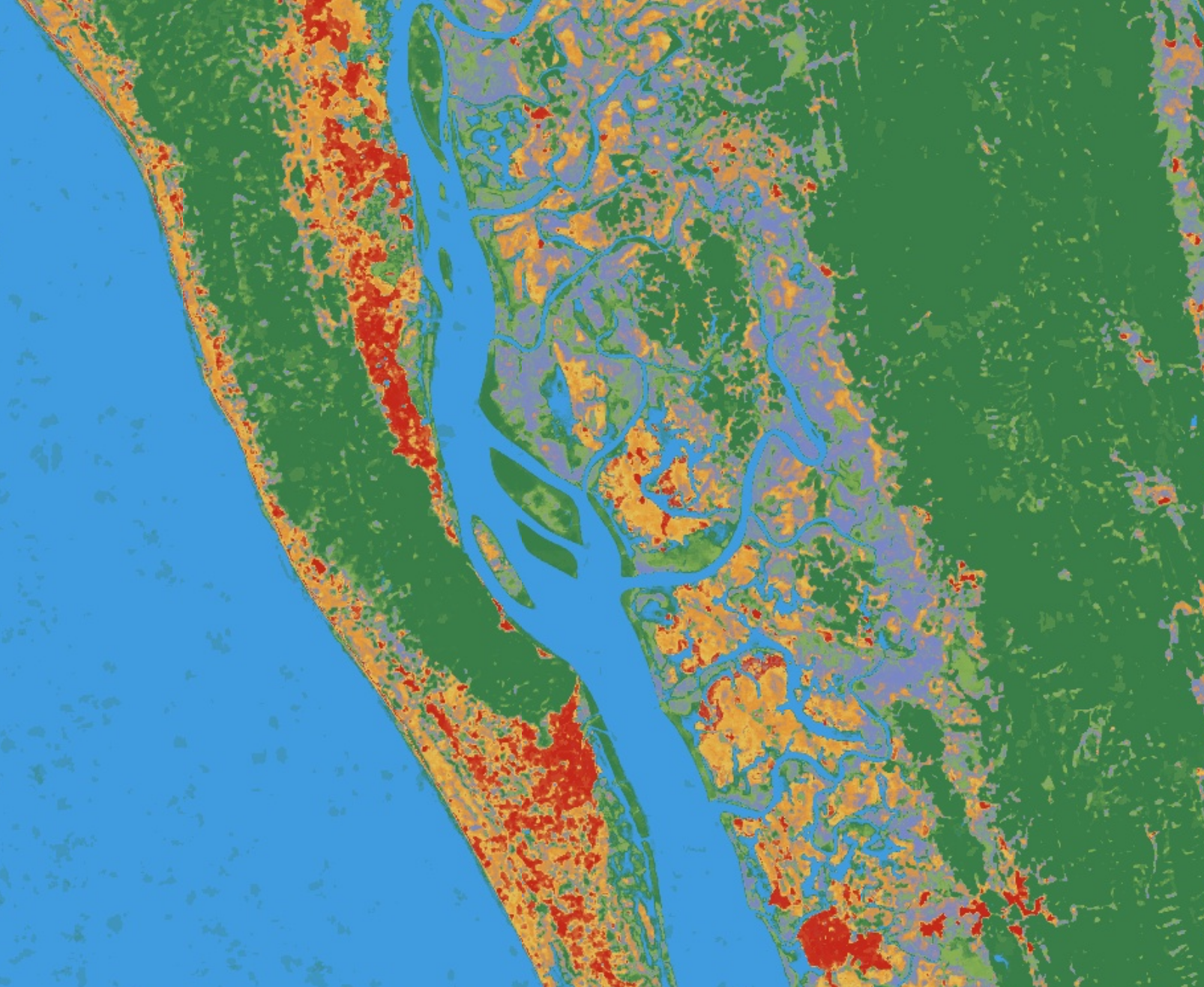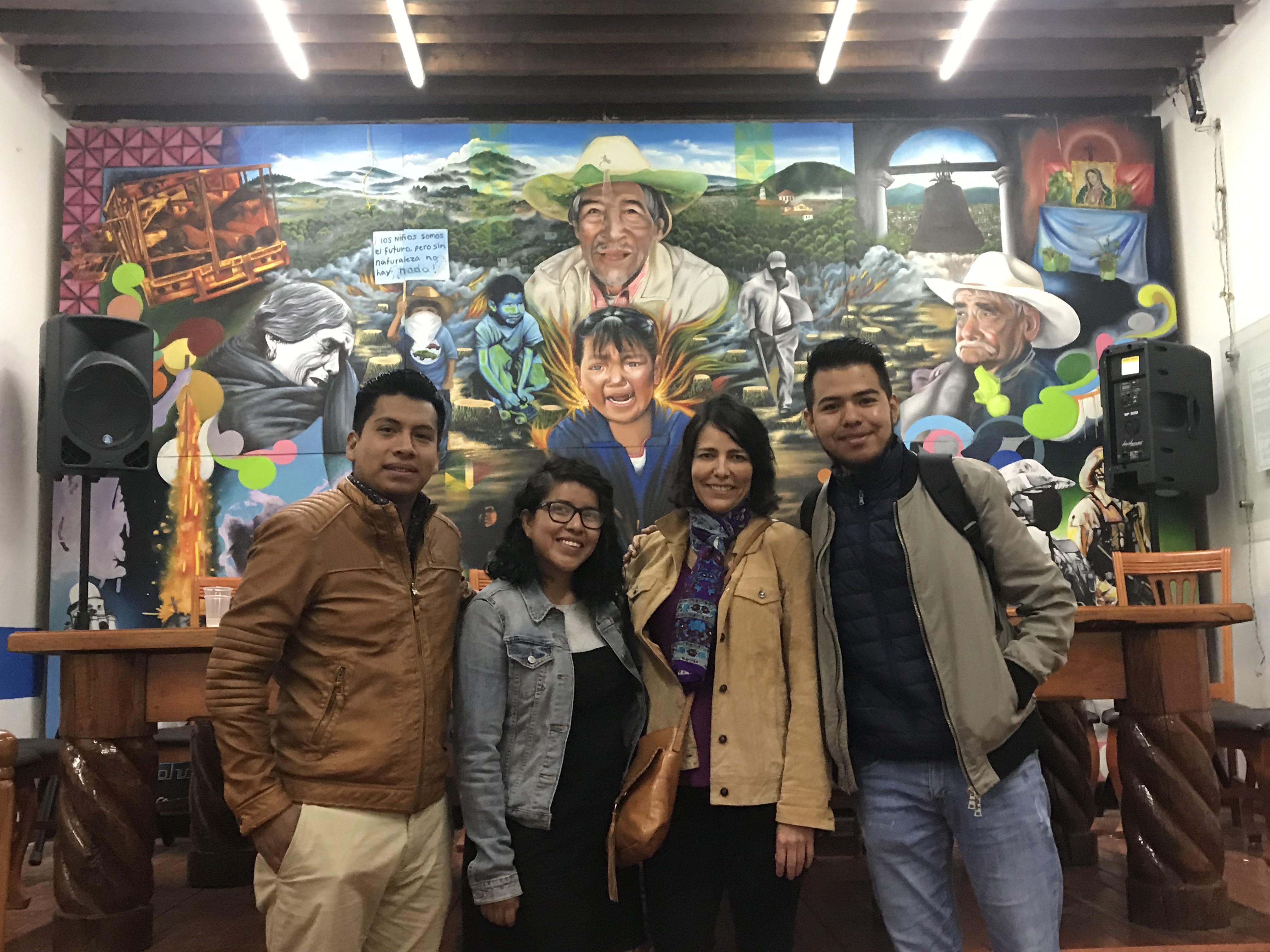
This project aims to: a) describe the dynamics of violence in Mexico; b) analyze the evolution of criminal groups, their dynamics across time, and map their territorial presence; and c) identify how organized criminal groups “rule” the territories they control, including their relationships with state officials and local communities. To achieve these goals, PovGov employs text analysis (on various print and digital sources), GIS, Neural Networks, and several data processing techniques.
Approximately 7.6 million (around 67%) of unauthorized immigrants in the United States are from Mexico and Central Americans. Many of them migrate to escape violence. These migrants face a myriad of risks, including dangerous journeys, exploitation by organized crime and corrupt officials, and the constant threat of deportation back to the very conditions they escaped. Deportations further exacerbate these problems, causing family separation, childhood trauma, and potential human rights violations.
We seek to explore legally sponsored temporary migration as an alternative to address the root causes of this form of immigration. We are particularly interested in understanding how a substantial income increase (an average of US $3,000, which places the household in Mexico’s top decile) impacts: 1) household poverty, human capital, health; 2) the potential for funding local public goods and enhancing political accountability; and 3) the strategies to protect these resources from organized crime.
The U.S. immigration court systems, one of the world’s largest, faces an estimated backlog of 830,000 cases across 68 courthouses. Immigration court judges, whose decisions determine a foreign national's fate in the U.S., hold immense power. In light of the rapidly changing immigration landscape, Povgov seeks to examine: 1) the legal and non-legal considerations that shape judicial decisions, and 2) the long-term consequences of immigration court decisions on migrants’ well-being and home countries.
U.S. immigration courts outcomes vary widely, with asylum grant rates ranging from over 90 percent to single digits. This suggests that asylum and removal outcomes are less dependent on the legal facts of the case in question and more on the identity of the presiding immigration judge. While existing research has extensively documented these discrepancies, they provide little insight into why such disparities exist. To address this we, we will: 1) conduct sentiment analysis of immigration court transcripts to identify judge-specific patterns in recurring themes and their consideration; 2) use predictive modeling and machine learning to determine if judges’ language predicts case outcomes; and 3) analyze how these outcomes, particularly those influenced by nationality, impact migrants’ home countries and long-term well-being.
Although Mexico has shifted its public health focus from infectious to chronic diseases, persistent poverty, insecurity, and ineffective governance in its fragmented health systems have meant that many preventable deaths in Mexico continue occurring. The COVID-19 crisis has worsened this, causing a significant death toll and long lasting effects on the health of all Mexicans. Premature deaths are further driven by unequal access to care, supply shortages, facility and equipment maintenance, staff absenteeism, and insufficient funding within public healthcare.
This project aims to analyze the burden of disease and the governance conditions that may improve equity and save lives within Mexico’s public health system. We will utilize more than ten million death certificates (1998 to 2018) and examined the institutional COVID-19 response across public health providers. By better understanding disease profiles, public health responses and governance, we seek to empower patients, health providers, and policymakers to better serve all Mexicans, with targeted attention to Indigenous communities and those in extreme poverty.

How can gender inequitable attitudes, norms and behaviors that lead to gender-based violence be altered? We seek to answer this question through an intervention targeting Mexican middle- and high school students in one of the most violent municipalities in the Greater Mexico City Metropolitan Area.
Based on Cognitive Behavioral Therapy, the intervention equips students with emotional regulation tools, biases awareness, and prosocial strategies to reduce violent tendencies. It also explores how influential students can promote positive shifts in school-level gender norms.
Why have institutional anti-corruption reforms in Latin America largely failed? This research agenda explores the micro-dynamics linking institutional anti-corruption efforts, populism and citizen perceptions, attitudes, and behavior regarding corruption. Using Mexico as our case study, we will: 1) determine whether citizen perceptions of corruption are culturally or institutionally driven; and 2) identify conditions under which institutional versus populist frameworks deter bribery.
Our research agenda is composed of two interconnected interventions. First, we investigate whether the failure of institutional anti-corruption reforms can be attributed to citizens’ cultural views on corruption, rendering the impact of institutional measures negligible. For this purpose, we rely on a unique randomized control trial that leverages migration as a vehicle to disentangle culture versus institutional influences. Second, we seek to understand whether the failure of institutionalized anti-corruption efforts can be linked to anti-corruption populism movements. Using a lab-in-the-field experiment along the US-Mexico border, we analyze how institutional vis-à-vis populist “anti-corruption” payoffs affect bribery behavior.

This project will create a satellite monitoring system to track the progression of the Rohingya refugee crisis from 1980 to the present, aiding policymakers and humanitarian organizations. We will conduct participatory mapping workshops in Kutupalong Refugee Camp to capture oral and visual histories of life before, during, and after their expulsion. These histories will be linked to remote sensing analyses that map landscape changes indicative of mass violence, such as forest regrowth following village destruction. Using 3D modeling, we will create digital visualizations of our Rohingya participants’ home villages, providing them with ‘digital capsules’ of their cultural histories from before the atrocities. This project will revolutionize our ability to transparently monitor mass violence and empower refugees to preserve their heritage through advance technology. Liza Goldberg is responsible for this project.

PovGov collaborated with the Instituto Tecnológico Autónomo de México (ITAM), a leading university in Social Sciences in Mexico, supported by the US Embassy in Mexico and the Mexican Association of Universities (ANUIES). Together, we initiated a summer program, sponsored for four years, and virtually during the pandemic, bringing together ten indigenous students from various Mexican communities with counterparts from a prestigious Mexican institution. The immersive experience at Stanford covered Global Risks in citizen security, governance, and the environment in Mexico, integrating extracurricular activities in Silicon Valley. This initiative not only provided access to cutting-edge research and sophisticated methodologies but also fostered continued engagement, with many students participating in research teams and internships, particularly focusing on indigenous governance and the impact of COVID-19 on indigenous communities in Mexico.